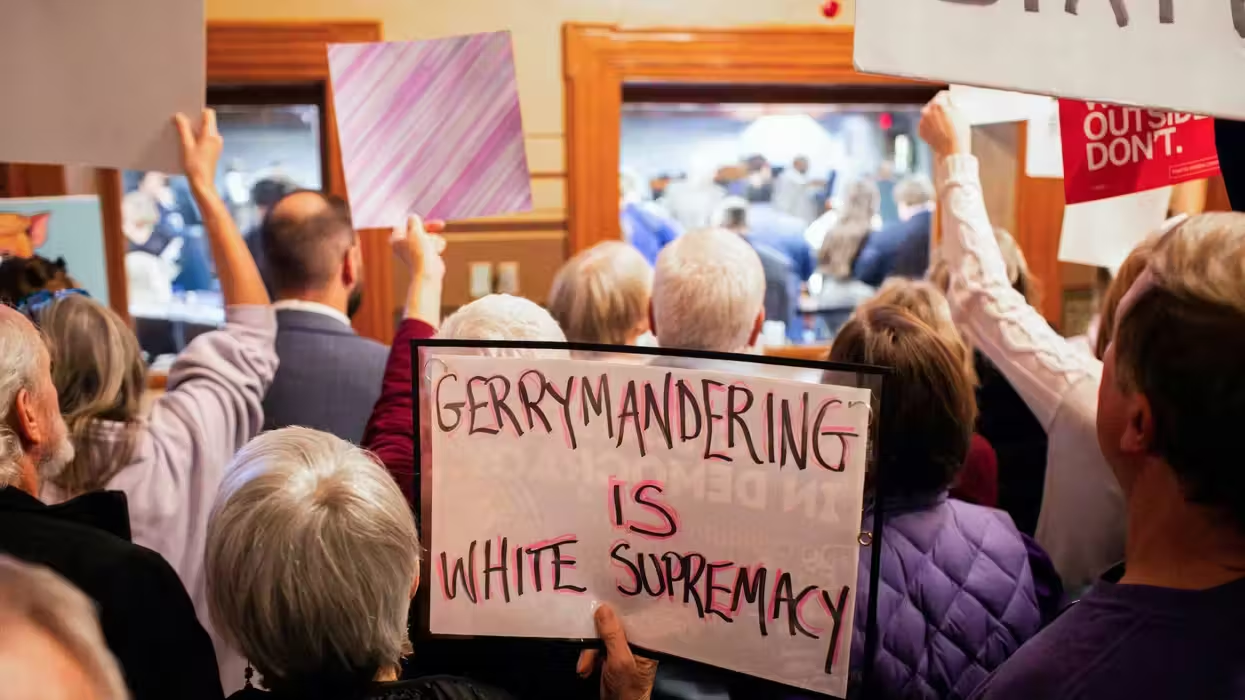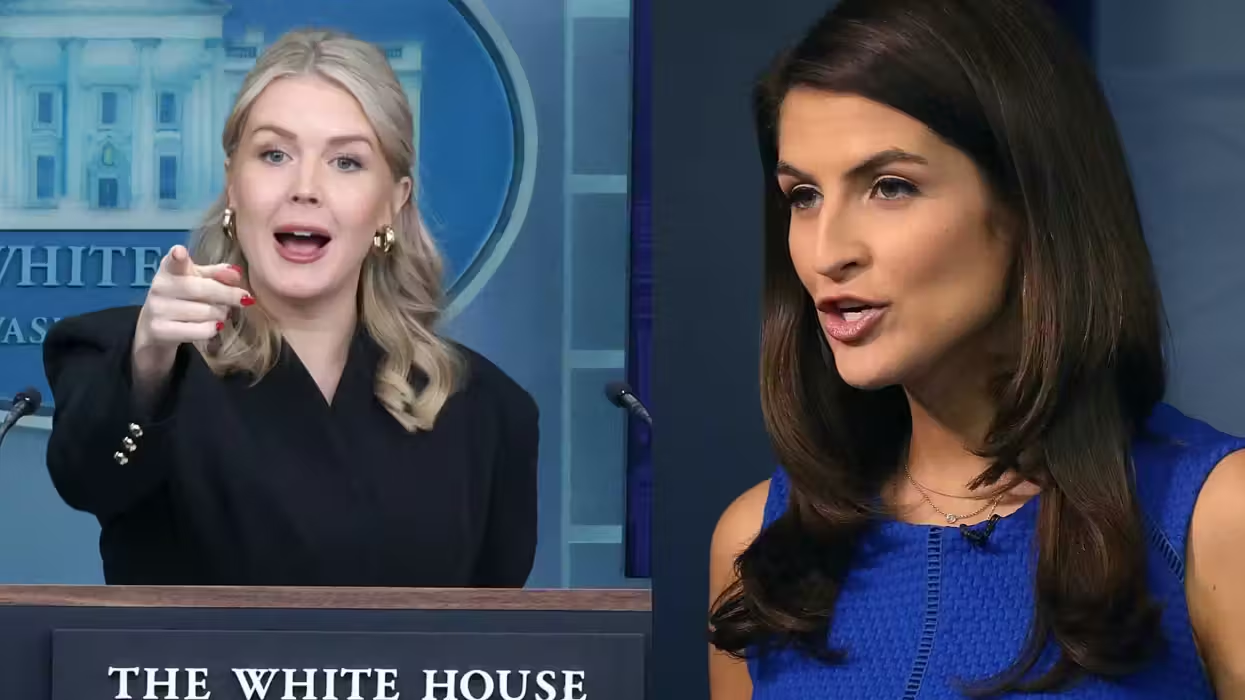TheBlaze will be featuring regular interviews with newsmakers that we think would be of interest to our readers. As part of this ongoing series, we sat down with Congresswoman Aumua Amata Radewagen (R-American Samoa).
Amata was elected in 2014 as only the third U.S. delegate from American Samoa, and the first woman to represent that territory. She currently serves on the House Natural Resources Committee, as well as that committee's Subcommittee on Indian, Insular and Alaska Native Affairs, and its Subcommittee on Oversight and Investigations.
***************
Unfortunately, many Americans don’t know much about American Samoa, so I want to use the first few questions to try to fix that. What’s your favorite thing about your home?
From my home on Coconut Point, I have the ocean right there. It’s beautiful! It’s also accessible for fishing, canoeing and all the traditional Samoan activities. I still get out and fish or paddle. As to American Samoa as a whole, I love how we’re both fully American and fully Samoan. Our traditions are strong, and we care about our heritage, but we also are patriotic Americans, and our people enlist in our armed forces at such high rates that our Army recruiter has the highest enlistment rate in the entire nation. I also appreciate that the people of American Samoa are people of faith and that is a strength of our community.
What’s your favorite local dish?
Samoan cuisine is unique and Samoan dishes are considered as delicacies throughout the world for their exotic taste and style of preparing. My favorite is Vaisu or red snapper grilled over coconut charcoal until it is cooked and the flesh flakes easily with a fork. Meanwhile, add coconut milk, onion, salt (adding a bit of chile pepper to the mixture is optional), in a bowl. When the red snapper is cooked, pour the coconut milk mixture over the fish, cover, and let stand for 5 minutes to absorb the coconut milk. Serve with Fa'alifu Ufi or yam cooked in coconut milk on the side.
If someone reading this wants to visit American Samoa, what is one thing they definitely have to see while they’re there?
Everything scenic on the larger island (Tutuila) is easily viewed because the main roadway skirts the island mostly end to end, but some of the visual highlights are Rainmaker Mountain across the Harbor, the islets of legend just offshore called Fatu and Futi, and numerous scenes in our National Park, which includes bird habitat. If a traveler wanted to be thorough, they could go by boat or small aircraft over to the island of Ofu to see one of the most pristine and lovely beaches in all of the Pacific.
Can you say something to us in Samoan?
Our most basic expressions are the warm salutation “Talofa!” and then, “Soifua” which is an expression of good health.
You graduated from the University of Guam. What was the biggest change going from American Samoa to Guam?
I benefited from traveling and living all over the Pacific as a youth because my father, Gov. Coleman, was appointed an administrator by the U.S. in several places before his election in American Samoa. So, I was used to it and generally enjoyed wherever I was at the time. I spent time in Guam, the Marianas, the Marshall Islands, and of course, American Samoa, and it was all important to my education and understanding of the region.
You come from a political family. Your father was the first ethnic Samoan to be appointed governor of the territory. Did you always know that you wanted to get involved in politics yourself?
Not at all. I was always interested in following the news and what my father was doing, because I accompanied him so much. Once I started working in Washington, D.C. I realized I could present the people of American Samoa with a choice, and began putting my name in for the Congressional seat. Persistence eventually led to an opportunity for public service, and I’m humbled by it. At the same time, this leadership role is an important marker in our culture, which is traditionally male dominated. And by that, I simply mean that I have a small role in helping all our young people know they can go out and follow dreams too, even though their dreams might be very different than mine.
Prior to your election as the U.S. representative from American Samoa, you served on the U.S. House of Representatives Majority Leadership Staff and as scheduling director for U.S. Rep. Philip Crane (R-Ill.). I understand that representatives from U.S. territories are allowed to vote in committees, but not on the floor of the House. Aside from this, having worked with representatives from U.S. states and now as a representative yourself from a U.S. territory, what’s the biggest difference between the two roles?
The role of a member of Congress from a territory is often misunderstood. I serve on three committees, including voting on those committees, so we can influence legislation directly. I have floor privileges and can express my opinion on anything directly to influential congressional leaders. I can also introduce and cosponsor legislation, and I actively do so.
What do you consider to be your greatest accomplishment so far?
I was blessed to have a bill I introduced passed as a Freshman, which is rare; be on three committees immediately; and become a subcommittee chair in my first term. Due to the unique economic and geographic isolation of our islands, I work for equitable treatment with the states, especially in two areas: opportunity and education for our young people, and health care quality and access, particularly for our many veterans. I’ve succeeded in directing federal funding to specific priorities on the islands in a number of instances now, and I think the one that stands out the most is a $7 million boost in yearly education funds, along with ongoing efforts to preserve the tuna industry.
What’s something that you wish people knew about you?
I try to bring a mix of understanding Western ways and the strengths of Samoan community culture to Congress. As such, I focus on persistence, cooperation and relationships as a means of getting things done. Sometimes it takes time and patience. A result that I didn’t know until recently when the Georgetown University/Senator Lugar Center Bipartisan Index came out is that I rank 14th out of all 441 House congressional seats in total bipartisan cosponsorships. I can be true to who I am, stay principled and still find lots of ways to move forward on shared priorities, such as reforms for our veterans.







